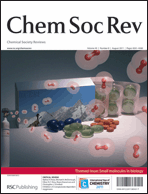A critical review article entitled “Recent advances in molecular imprinting technology: current status, challenges and highlighted applications” (L.X. Chen, S.F. Xu, J.H. Li, Chem. Soc. Rev., 2011, 40(5), 2922–2942) contributed by Professor Lingxin Chen’s group of “Environmental Microanalysis & Monitoring Laboratory”, Key Laboratory of Coastal Environmental Processes, Yantai Institute of Coastal Zone Research, CAS, was published by Chemical Society Reviews recently, the top journal of Royal Society of Chemistry with impact factor of 26.58 in 2010.
Molecular imprinting technology (MIT) has attracted extensive research interest and widely applied in many fields, such as purification/separation, chemical/biological sensors, catalysis, controlled drug release, and antibody synthesis, owing to its prominent superiorities, such as desired selectivity, mechanical/chemical robustness, low cost and easy preparation. Accompany with those advantages, MIT confronts some challenges, involving biological macromolecule imprinting, heterogeneous binding sites, template leakage, incompatibility with aqueous media. In this critical review, Chen and his coworkers briefly review the recent advances of MIT, particular emphasis on significant progresses of novel imprinting methods, some challenges and effective strategies for MIT, highlighted applications and the future perspectives of MIT. This critical review is valuable for those researchers who are interested in MIT. 
At present, Chen’s group undertakes some important research projects, such as the National Natural Science Foundation of China, the Innovation Projects of the Chinese Academy of Sciences and the 100 Talents Program of the Chinese Academy of Sciences. The current main research interests: aiming at typical environmental pollutants especially present in coastal water (heavy metals, persistent organic pollutants, etc.), to carry out the related innovative studies, such as MIT-based separation and determination, chromatographic microanalysis and sample pretreatment techniques, nanomaterial-based chemo/biosensors, microorganism degradation mechanism. A series of research achievements have been published in Journal of Materials Chemistry, Journal of Chromatography A, Analytical and Bioanalytical Chemistry, Biosensors and Bioelectronics, Electrophoresis, Chromatographia, ACS Applied Materials & Interfaces, Analyst, Microchimica Acta, Talanta, Nanoscale, TRAC-Trends in Analytical Chemistry, Organic & Biomolecular Chemistry, Journal of Separation Science, Applied Microbiology and Biotechnology, Annals of Microbiology, et al.
